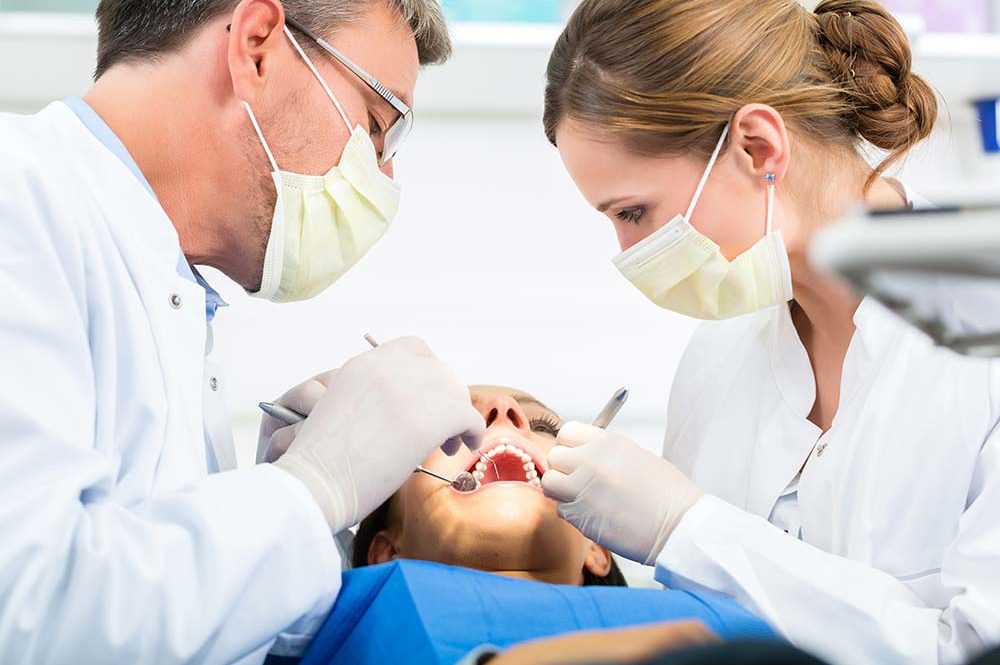Home » Impacted Canines

When a permanent canine (or adult canine) tooth fails to fully erupt, it can negatively affect the shape of your dental arch. In some cases, a permanent canine will be deeply impacted and the deciduous canine (or baby tooth) will remain even into the adult years. Since the shape and color of the deciduous teeth do not match the permanent teeth, a patient may benefit from having the baby tooth removed and the impacted tooth orthodontically moved into the proper position. In these cases, an orthodontist, family dentist, and oral surgeon work closely together to co-ordinate care for the patient.
To begin, a family dentist may recognize that your permanent canine is not erupting in the proper direction or at the appropriate rate. A referral is usually made to an orthodontist, where a treatment plan is formulated. The orthodontist may then refer the patient to an oral surgeon to surgically expose the impacted tooth and bond an orthodontic bracket to it. Once the tooth has been bonded with a bracket, the orthodontist gently pulls it into the ideal position over the months that follow.
What type of anesthetic is used?
At your consultation visit, our surgeon will discuss the anesthetic options for your procedure. Many factors determine what type of anesthetic would be most suitable for your specific situation. These factors include your level of anxiety with dental procedures as well as the duration and complexity of your treatment. In all cases, local anesthesia is used but, in addition to that, patients may have their treatment performed under light sedation, deep sedation, or general anesthesia. Ensuring a comfortable experience for our patients is our top priority, and our surgeon will guide you through the process of determining the anesthetic type that is right for you.
© Copyright Dr. Matthew D. Morrison, Oxford Oral & Maxillofacial Surgery Centre | Dental Website Design by Platinum Design